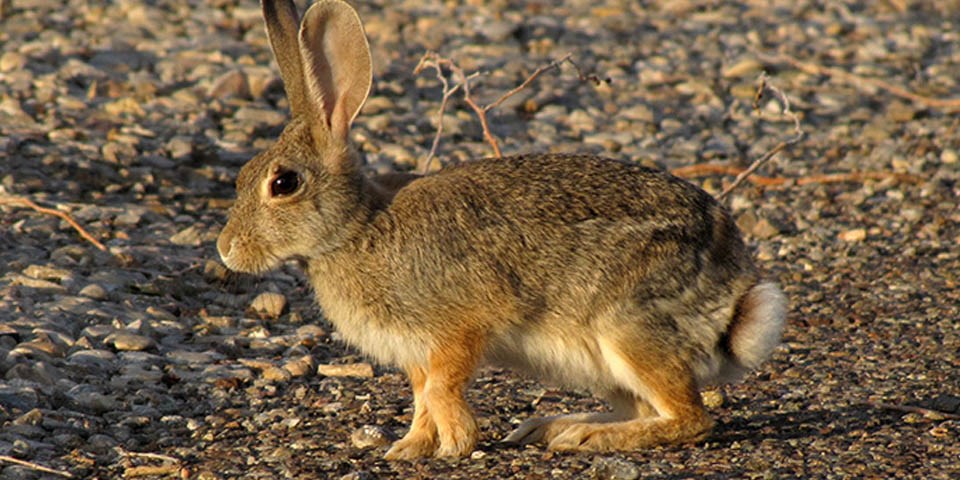
NPS Photo Some of you may remember Peter Cottontail from children’s stories and songs. In the Southwest, there are scores of cottontails just like this fictional bunny! You may see some of these rabbits running across roads or nosing around shrubs and brush, especially in the brushy areas of White Sands near the visitor center. The cottontails that live in and around White Sands National Park are desert cottontails (also called Audubon’s cottontails; Sylvilagus audobonii). They look like typical rabbits, with long ears, grey-brown fur, and large feet. Desert cottontails also typically have an orange-colored throat patch. They are about 14-15 inches long (35.5-38 cm) and weigh around one to two pounds (450-900 grams), making them much smaller than the jackrabbits also found here at White Sands. Of course, the desert cottontail’s most distinctive feature – indeed, the feature it’s named for – is its fluffy, white, cotton-like tail. Desert cottontails are found not only here at White Sands but also throughout the Southwest and Plains States, and into Mexico. They prefer drier habitats (such as grasslands, shrublands, and pinyon-juniper woodlands and riparian areas in deserts) than the other two species of true rabbits, the eastern cottontail (S. floridanus) and Nuttall's cottontail (S. nuttalli). Thickets, brush, and grass provide shelter for cottontails. During the hot parts of the day, they rest in depressions under grass or brush. Sometimes, they’ll even rest in burrows of other animals, like those of badgers or ground squirrels. During the cooler evenings and early mornings, cottontails are more active, emerging from hiding places to eat. These herbivores nibble on grass, cacti, bark, and other plant parts. Thus, plant foliage serves two purposes for cottontails: food and a place to hide. Cottontails certainly need plenty of hiding places. These unlucky animals are hunted by just about every predator in the area, including rattlesnakes, hawks, owls, coyotes, foxes, badgers, bobcats, and even domestic dogs and cats. When they are spotted by predators, cottontails do have a few evasive tricks. They can run at speeds up to 20 mph in zigzag patterns toward nearby brush. But these tricks don’t always work. Because of this, cottontails in the wild often have a lifespan of less than two years. With just about everything out to get our unlucky cottontails, you may wonder how we have so many out here. Well, if you’ve ever heard the expression “multiplying like rabbits,” you already know the answer. Desert cottontails are prolific breeders. In one year, a female rabbit can give birth to two to six litters, with each litter containing between one to five (typically three) babies. That’s a lot of rabbits! Although these babies are born blind and hairless, they grow quickly. By two or three weeks old, they move out of the fur and grass-lined nest their mother had built. By three months old, they can start reproducing, themselves. Clearly then, these numbers add up! So, although these rabbits are threatened by nearly every predator in the region, you can count on there being more desert cottontails to hop their way around White Sands. |
Last updated: August 27, 2020
